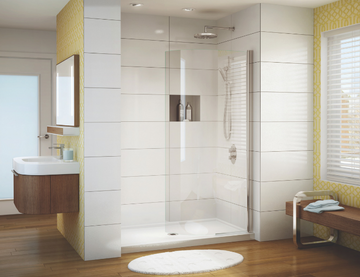

In the previous article on Types of Sink Waste, there was a brief mention of what a sink overflow is. This article will then go into more detail about bathroom sink overflow and what its functions are.
Bathroom sinks and some other fixtures have an overflow opening in the basin. This opening is located on the foundation wall closest to you, near the rim of the sink. But some trendy or DIY sink types - such as DIY concrete sinks in the bathroom or some basin sinks - may not include an overflow opening. While adding another opening to these sinks may detract from the aesthetics of their design, overflows do serve an important purpose, so be careful when choosing a sink option without an overflow valve, knowing that overflows are more likely.
How the Sink Overflow Works
The standard sink overflow is a hidden channel running along the bottom of the sink basin. You may not be able to see it from the top of the sink, and often you can't see it from below either. At the top of the overflow channel, near the rim of the basin, there will be one or two holes. The bottom of the channel has an outlet hole that allows water to flow into the drain below the sink. Both the sink and the overflow channel drain into the same drain, but the overflow channel is always open and unaffected by the sink stopper.

Function 1: Preventing Water From Overflowing
If you close the drain in your bathroom sink and fill the sink basin to the level of the overflow hole, water will begin to drain into the overflow and out down the drain. This helps prevent water from spilling over the top of the basin, but since sink overflow holes are usually small, it may not prevent spillage for long. If the faucet is running at full speed, the overflow pipe may only delay water overflow for a short period of time.
It is a common misconception that a sink overflow pipe will prevent water from overflowing if the sink drain is clogged. However, most sink overflows are so close to the drain in the basin that it is unlikely that a clog will occur between the drain and the overflow such that it clogs the former but not the latter. The overflow spout on a bathroom sink really protects against overflow when the stopper is closed and the faucet is accidentally left running, not when a clog occurs.
Overflow drains on bathtubs are a little different, with a greater distance between the drain and the overflow connection. If the clog is close to the drain of the bathtub, the overflow connection on the bathtub can still serve to prevent water from overflowing.
Function 2: Improving Drainage
Sink overflows help the sink drain faster by allowing air to enter the drain through the overflow channel. When there is enough water in the basin to completely cover the drain, the drain cannot get air through the water, which creates a suction effect that slows the flow of water down the drain. However, as the overflow spout delivers air to the drain, the suction effect decreases and the water drains out more quickly. In contrast, a sink without an overflow usually bubbles up as it drains, and it usually drains more slowly.




